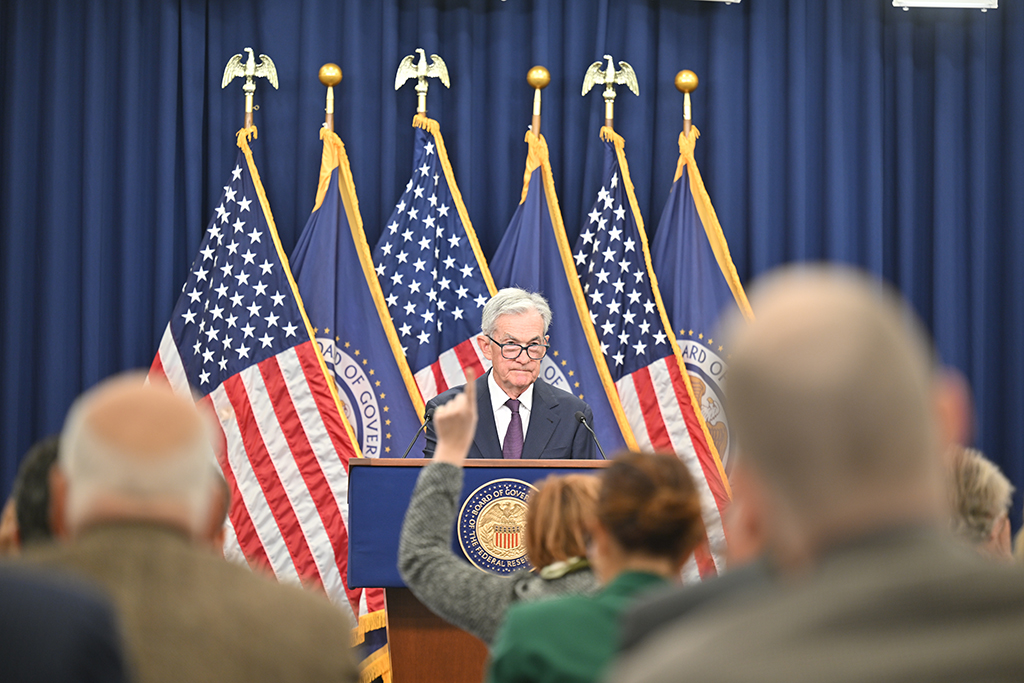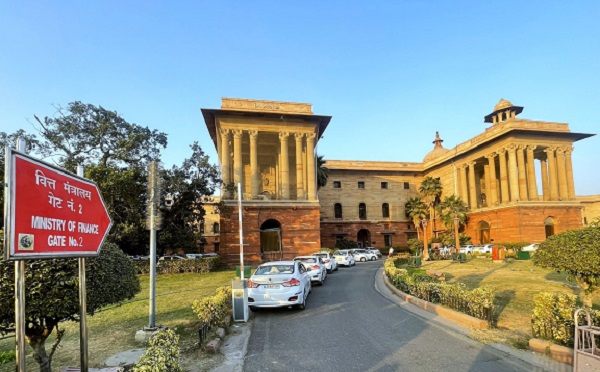.png)
The Morning Edge: Fed’s Daly Sticks to Gradual Rate Cut Plan—But Warns Inflation Risks Loom
A newsletter designed to prepare you for the day, offering a concise summary of overnight developments and key events ahead that could influence your workday.

April 21, 2025 at 1:56 AM IST
QUICK SNAPSHOT
Global Sentiment: Risk-off
Factors: China Keeps Lending Rates, Trump-Powell
TODAY’S WATCHLIST
- PBoC Loan Prime Rate
- IMF Meetings
- US Chicago Federal Reserve President Austan Goolsbee speaks
THE BIG STORY
San Francisco Fed President Mary Daly signalled Friday that two rate cuts this year remain plausible but cautioned that persistent inflation risks—amplified by uncertainty around President Trump’s trade policies—could force the central bank to scale back its easing plans. Speaking at UC Berkeley, Daly emphasized a "no urgency" approach to rate reductions, even as Trump’s advisers reportedly explore options to oust Chair Jerome Powell over the Fed’s cautious stance.
Daly stressed that the Fed’s "single promise" to restore price stability trumps all else, even as Trump’s tariffs threaten to both fuel inflation and slow growth. With rates steady at 4.25%-4.50% since December, policymakers remain in wait-and-see mode—a strategy that has drawn White House ire but reflects the Fed’s balancing act: cutting too soon risks inflation rebound, while delaying could squeeze an economy now facing trade policy whiplash.
DATA
The Initial jobless claims fell by 9,000 to 215,000 for the week ended April 12—the lowest level since February—beating forecasts of 225,000 and signalling labour market resilience despite tariff uncertainties. The economy added 228,000 jobs in March, though the unemployment rate edged up to 4.2%. Meanwhile, single-family housing starts plunged 11.4% to an eight-month low of 1.324 million units in March, with permits dropping 2.0% to 978,000, reflecting tariff-driven pressures on construction. Economists had expected starts at a higher 1.420 million rate, underscoring the sector’s unexpected weakness.
WHAT HAPPENED OVERNIGHT
US stocks mixed on Thursday as Eli Lilly's 14% surge on its breakthrough diabetes drug and Apple's 1.4% rebound offset UnitedHealth's 22% plunge after slashing its profit outlook. Trade optimism briefly lifted sentiment after Trump touted progress in US-Japan talks, though rate concerns lingered.
The US Treasury 10-year yield rebounded above 4.3% on Thursday, snapping a three-day decline, as markets digested conflicting signals from trade talks, Fed policy, and economic data. Trump escalated his attacks on Powell, demanding faster rate cuts, while the Fed Chair cautioned tariffs could stall growth and inflation. While, the US dollar index traded flat on Friday in thin holiday trading, hovering near 3-year lows amid lingering trade uncertainty and Trump's renewed criticism of Fed policy. While Trump hinted at potential tariff relief with China, his call for faster rate cuts clashed with Powell's cautious stance. The dollar index edged up 0.1% Thursday but pared gains after Trump's remarks, closing the week down 3% for the month as markets weighed trade risks against a resilient labour market.
Brent crude oil prices surged nearly 3% to $67.70/barrel on Thursday, marking a second daily gain as fresh US sanctions on Iranian exports and OPEC+’s stricter compliance plans fuelled supply concerns. While OPEC and major banks trimmed demand forecasts due to trade tensions, the benchmark notched a 5% weekly rise—its first in three weeks—despite mixed US inventory data and economic headwinds.
Day’s Ledger
Economic Data
- PBoC Loan Prime Rate
Corporate Actions
- Earnings for January-March: Aditya Birla Money, Alok Industries, International Gemmological Institute (India), Shekhawati Industries, Anant Raj, GNA Axles, Himadri Speciality Chemical, Pitti Engineering, Tata Investment Corporation, Mahindra Logistics, Rajratan Global Wire,
- Muthoot Finance to consider dividend
Policy Events
- IMF Meetings
- US Chicago Federal Reserve President Austan Goolsbee speaks
TICKERS
- COAL INDIA unit SECL signed a ₹70.40 billion deal with TMC Mineral Resources to use paste filling technology for coal mining, which reduces surface land usage and helps prevent subsidence in mined areas.
- HDFC BANK reported a 7% rise in January-March consolidated net profit to ₹188.35 billion. Net interest income increased 10.3% to ₹320.70 billion, despite home and corporate loan pricing issues affecting growth.
- HDFC LIFE INSURANCE saw an 18% rise in individual APE and 13% growth in VNB for FY25. January-March APE was ₹51.86 billion.
- ICICI BANK posted a 15.7% rise in January-March net profit to ₹135.02 billion. Net interest income grew 11% to ₹211.93 billion. Non-interest income rose 18.4% to ₹70.21 billion; provisions stood at ₹8.91 billion.
- IDFC FIRST BANK was fined ₹3.86 million by the RBI for violating KYC norms related to certain current accounts. The RBI cited non-compliance with its 2016 KYC Directions as the reason.
- INFOSYS projected FY26 revenue growth at 0–3% in constant currency, lower than its earlier 4.5–5% estimate. The Street expected 2–4%.
- JIO FINANCIAL SERVICES reported January-March revenue rose 18% YoY to ₹4.93 billion, driven by lending, leasing, and digital finance. Net profit increased 1.7% to ₹3.16 billion from ₹3.11 billion a year ago.
- JUST DIAL reported a 36.2% YoY jump in January-March net profit to ₹1.58 billion. Revenue rose 7% to ₹2.89 billion from ₹2.70 billion. The company credited its performance to improved operational efficiency.
- PUNJAB NATIONAL BANK was fined ₹3 million by the RBI for failing to follow directives on penal charges for inoperative accounts with low balances, indicating non-compliance with customer service regulations.
- TATA ELXSI reported a 13.4% QoQ decline in January-March net profit to ₹1.72 billion, down from ₹1.99 billion.
- VOLTAS received a show-cause notice from customs for underpaying import duties worth ₹248 million.
- YES BANK posted a 63% jump in January-March net profit to ₹7.38 billion. FY25 profit rose 92.3% to ₹24.06 billion. Net interest income grew 5.7% to ₹22.76 billion on 8.1% loan growth.
MUST READ
- Jal Shakti wants ₹2.79 trillion more for flagship water scheme, panel clears half
- Trade talks with UK in final stages, no new round
- More CEOs eye exit as going gets tough, options spring up
- Indian students in US now face deportation for minor offences
- Brace yourself, market is likely to get even shakier: Mark Mobius
- India draws up blueprint to reduce over $40 billion trade surplus with US
- Boeing jet returns to US from China, a victim of Trump's tariff war
- Firing Powell Would Hurt the Dollar and US Economy, France Says
- Indian industry not ready for ‘zero-for-zero’ tariff deal with US beyond few items



